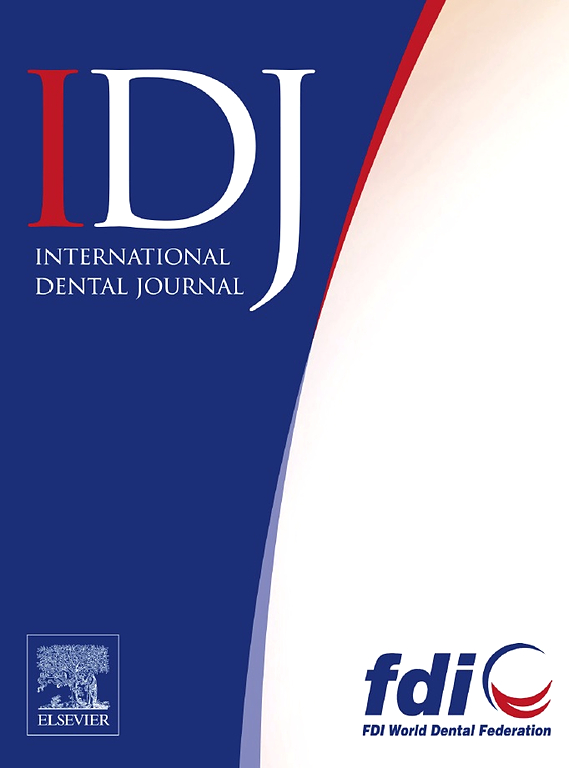Exploring the Levels of Dental Anxiety in Greek Patients
IF 3.2
3区 医学
Q1 DENTISTRY, ORAL SURGERY & MEDICINE
引用次数: 0
Abstract
Introduction
Dental anxiety is the apprehension experienced by an individual when confronted with matters related to dentistry, it impacts individuals' dental experiences and the dental healthcare providers’ professional lives, contributing to increased tension and potentially compromising performance. Levels of dental anxiety differ across cultures.
Objective
To collect normative data on levels of dental anxiety in Greece from a representative sample of people attending their usual dentist for a routine dental appointment.
Methods
A cross-sectional study was applied. 1313 Adults were recruited, as they attended 1 of 6 different dental settings and were scheduled for a routine dental appointment involving any of the following routine procedures: Check-up, hygiene, restoration, extraction, and pain relief. Their anxiety levels were assessed by applying the Modified Dental Anxiety Scale (MDAS), and by using the cut-off scores of 12 and 19 for assessing moderate and extreme anxiety, respectively.
Results
32.6% per cent of the respondents were found to be dentally anxious, out of which 8.2 % experienced high levels of dental anxiety. The mean MDAS score for the total study population was 10.36 (SD= 4.639). The findings indicated that females and first-time dental patients reported significantly higher levels of dental anxiety than males and repeat attendees. However, dental anxiety levels did not vary significantly across different dental procedures, age groups and dental settings. These results are in line with those reported by White in the U.S. population, demonstrating comparable levels of dental anxiety across both populations.
Clinical Significance
One in 3 patients visiting the dentist in Greece experience some level of dental anxiety. This finding underscores that dental anxiety is a prevalent public health concern in Greece. Dentists and healthcare providers should consider screening for dental anxiety that could lead to early identification and management.
探索希腊病人的牙科焦虑水平
牙科焦虑是个体在面对牙科相关问题时所经历的恐惧,它会影响个人的牙科体验和牙科保健提供者的职业生涯,导致紧张情绪增加并可能影响工作表现。牙齿焦虑的程度因文化而异。目的收集希腊人牙科焦虑水平的规范性数据,这些数据来自于在常规牙科预约中经常去看牙医的代表性样本。方法采用横断面研究。研究招募了1313名成年人,他们在6个不同的牙科诊所就诊,并被安排进行常规牙科预约,包括以下任何常规程序:检查、卫生、修复、拔牙和缓解疼痛。采用改良牙科焦虑量表(MDAS)对患者的焦虑水平进行评估,并采用分值12分和分值19分分别对中度焦虑和极度焦虑进行评估。结果32.6%的受访者存在牙科焦虑,其中8.2%的受访者存在高度牙科焦虑。总研究人群的平均MDAS评分为10.36 (SD= 4.639)。研究结果表明,女性和首次就诊的患者报告的牙科焦虑水平明显高于男性和多次就诊的患者。然而,牙科焦虑水平在不同的牙科手术、年龄组和牙科设置中没有显著差异。这些结果与怀特在美国人口中报告的结果一致,表明两国人口的牙齿焦虑水平相当。临床意义在希腊,每三个去看牙医的病人中就有一个经历过不同程度的牙科焦虑。这一发现强调了牙齿焦虑是希腊普遍存在的公共卫生问题。牙医和医疗保健提供者应考虑对牙齿焦虑症进行筛查,以便及早发现和管理。
本文章由计算机程序翻译,如有差异,请以英文原文为准。
求助全文
约1分钟内获得全文
求助全文
来源期刊

International dental journal
医学-牙科与口腔外科
CiteScore
4.80
自引率
6.10%
发文量
159
审稿时长
63 days
期刊介绍:
The International Dental Journal features peer-reviewed, scientific articles relevant to international oral health issues, as well as practical, informative articles aimed at clinicians.
 求助内容:
求助内容: 应助结果提醒方式:
应助结果提醒方式:


